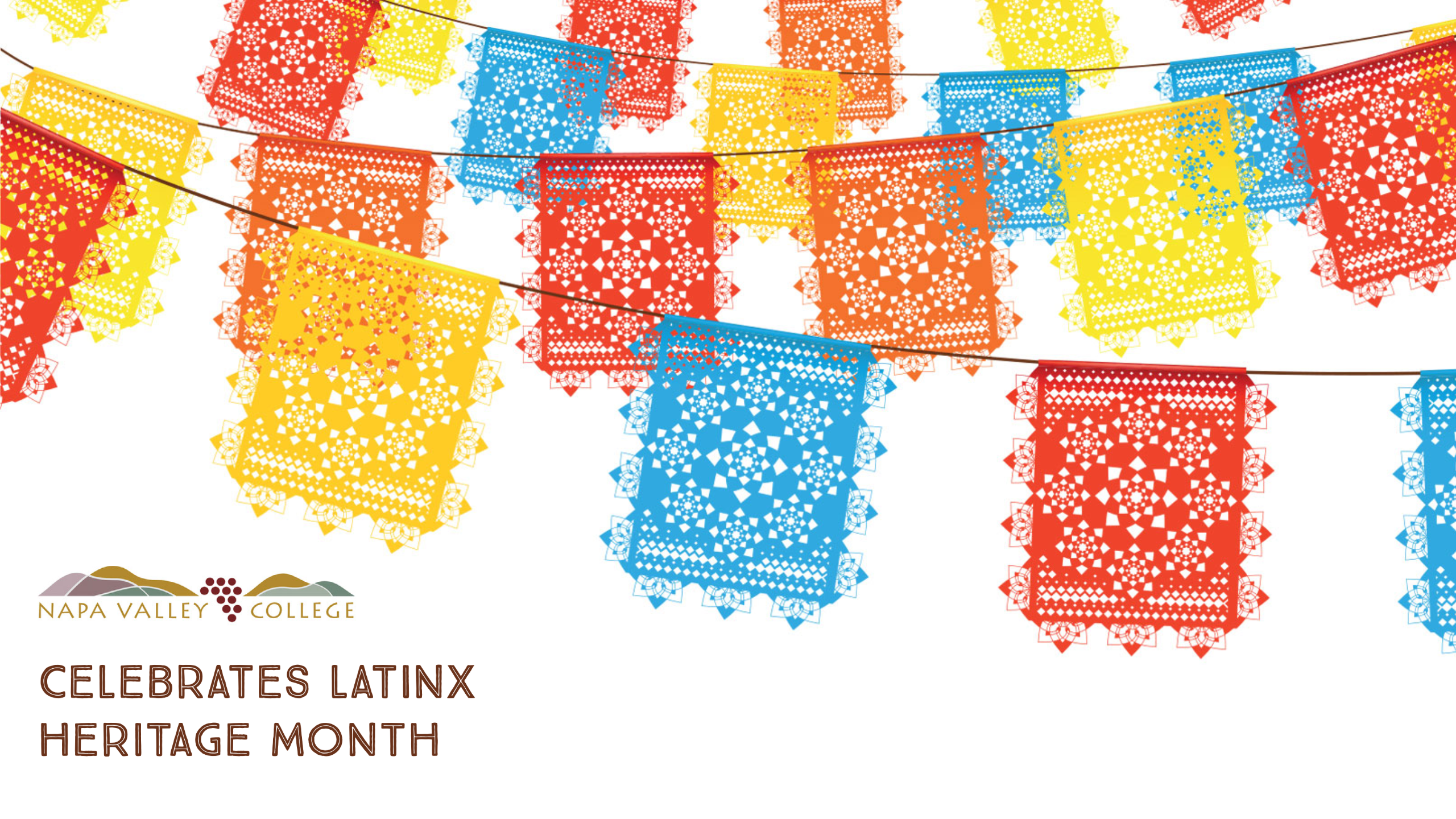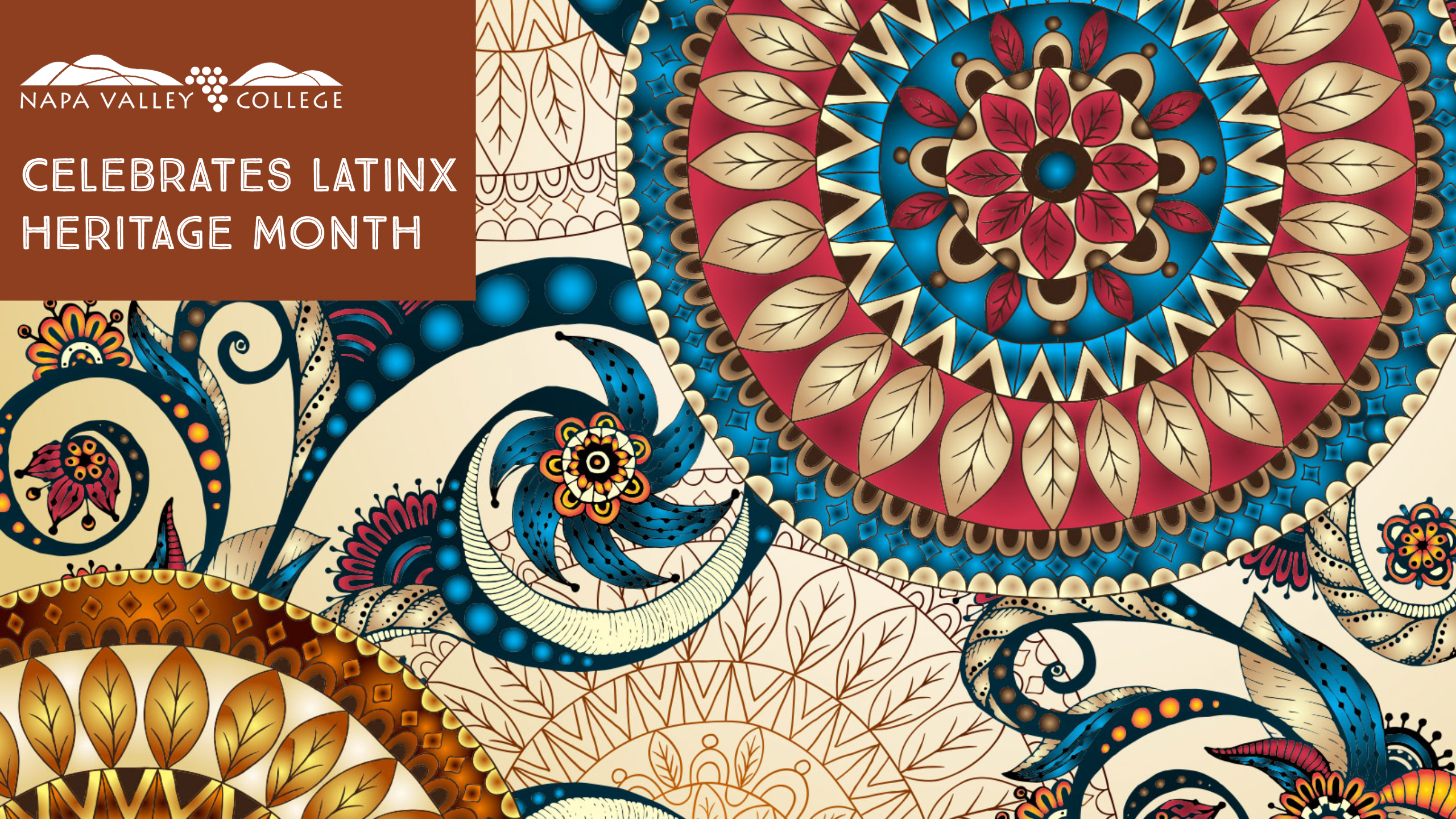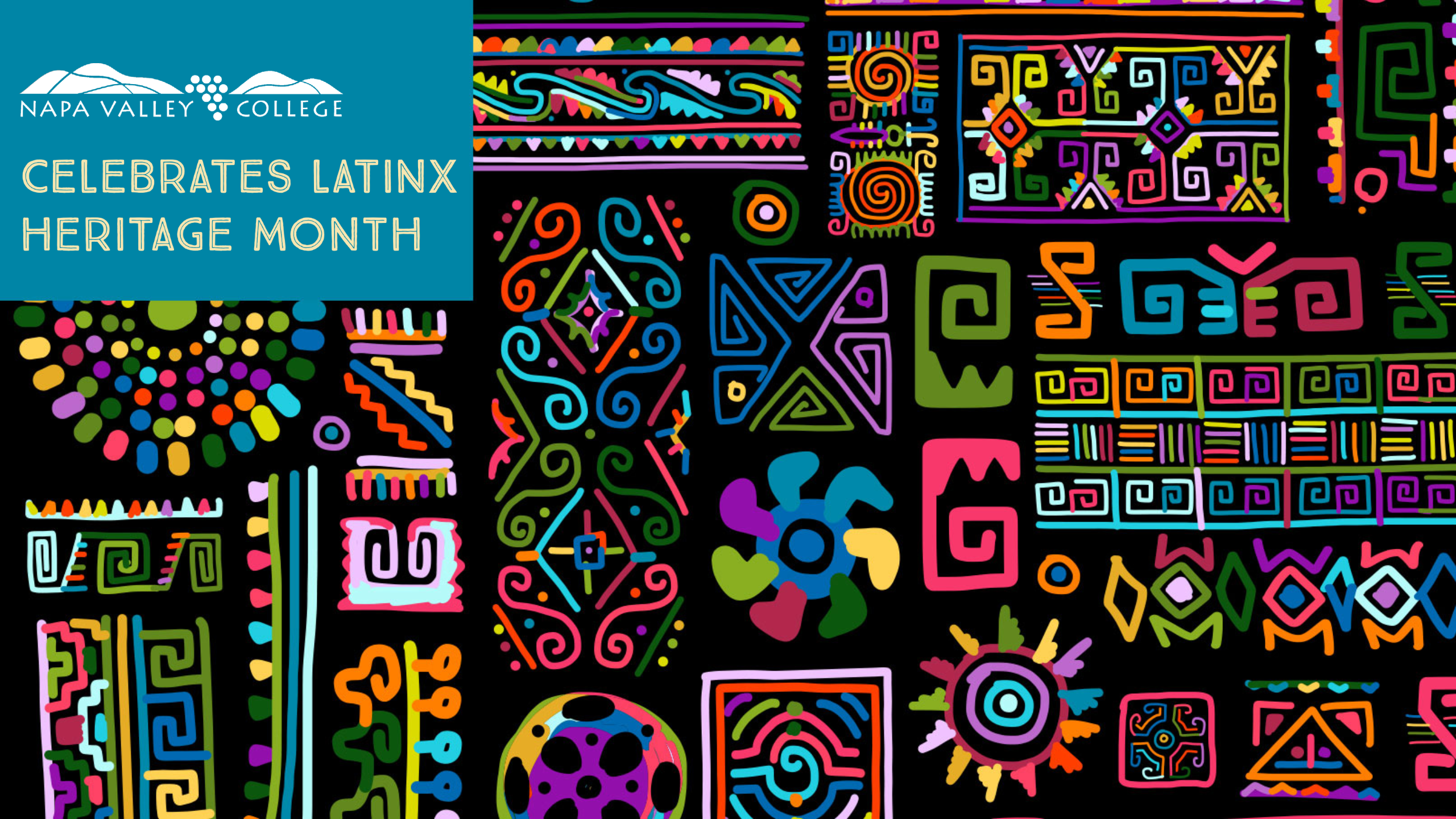LatinX Heritage Month
What’s in a Name?
Yesterday (September 15) marked the independence from Spanish colonial rule of several Latin American countries: Costa Rica, El Salvador, Guatemala, Honduras and Nicaragua. Mexico commemorates its independence today, September 16, and Chile’s independence anniversary follows two days after, on September 18. Thus begins the month of recognizing and celebrating the history, culture, and contributions of the Latinx community in the United States.
Under President Lyndon B. Johnson, the observation of the contributions of Americans
with ancestry from the Caribbean, Central and South America, Mexico, and Spain was
established in 1968 as Hispanic Heritage Week. In 1988, under President Reagan, this
week of recognition was extended to a month and enacted into law as Hispanic Heritage
Month.
At Napa Valley College, a Hispanic Serving Institution, we kick off this month of
recognition with informational resources, artistic renderings, and critical examination.
We celebrate this month as Latinx Heritage Month. Why have we chosen this name over
the nationally established name of Hispanic Heritage Month? What’s in a name?
In the article, “Mapping and recontextualizing the evolution of the term Latinx: An
environmental scanning in higher education” by Cristobal Salinas Jr. and Adele Lozano,
they detail the following history of the usage of the terms:
- “Hispanic derives from the Latin word Hispania, which later became España (Spain).”
- “Hispanic refers to people who are from countries where the primary language is Spanish (e.g., Spain, Columbia, Argentina, Mexico, Peru, Dominican Republic, among others).” “By contrast, the term Latino was adapted by the U.S. government to label individuals who identify as mestizo or mulato (mixed White, with Black and Native) people of Central or South America.”
- “The term Latino refers to people from the Caribbean, as well as Mexico, and the countries that comprise Central and South America, even those countries that are not Spanish-speaking (Belize, Brazil, French Guiana, Guyana, and Suriname).”
- “It is important to understand the historical similarities and differences between Hispanic and Latino, which have resulted in different meanings for these two terms. A key similarity between these pan-ethnic terms is that they both refer to a cultural and ethnic group, not a race. Indeed, people of Latin American descent comprise various races, depending on ancestry and context, as the social construction of race continues to change through time. Furthermore, a 2012 report by the Pew Research Center found that when it comes to self-identification, “most Hispanics prefer their family’s country of origin over pan-ethnic terms.””
- “Latinx first emerged in 2004 among “left-leaning and queer communities as a way to promote inclusivity in language.” With the rise of social media, the term then “gained a foothold by mid-2015, and its use began spreading beyond LGBTQIA communities.””
- “The term Latinx was “born out of a collective aim to move beyond the masculine-centric ‘Latino’ and the gender inclusive but binary embedded ‘Latin@’.””
At Napa Valley College, we choose to celebrate Hispanic Heritage Month as Latinx Heritage
Month. This terminology reflects our values as a college that embraces inclusivity
and knowledge. Latinx reflects the intersectionality of our various identities (culture,
language, race, ethnicity, phenotype, immigration status, gender, and sexuality),
recognizes the diversity of the Latinx community, nods to the past shared history
of colonialism, with its inherent violence against the Indigenous communities of the
Americas and the forced enslavement of African peoples and, perhaps most importantly,
the agency, resilience and beauty of the Latinx experience.
Saludos,
Dr. Patricia van Leeuwaarde Moonsammy
Senior Director, Diversity, Equity and Inclusion
Reference:
Cristobal Salinas Jr. & Adele Lozano (2019) Mapping and recontextualizing the evolution
of the term Latinx: An environmental scanning in higher education, Journal of Latinos
and Education, 18:4, 302-315, DOI: 10.1080/15348431.2017.1390464
Downloadable Zoom Backgrounds
Below are some high quality Zoom backgrounds you can download. Just right click them, and save them to your computer.




Music in the Latinx World
When we think of Latinx culture, we often think of music. Music has been a very important form of expressive culture throughout Latin America and the Caribbean. Music reflected the culture contact and exchange between various ethnic groups in the region, resulting over the years in genres that are hybrid and syncretic, such as Costeño music of Colombia. Music has functioned as resistance--as a repository of the history of people systematically oppressed through colonial and racist laws and practices that sought to prohibit subjugated people from practicing their own cultural forms while forcefully requiring them to adopt the cultural practices of the colonizer. Rara music and performance of Haiti is an example of this phenomenon. Music reflected the image that was to be presented to the world as the national culture of the emergent nation, as was the case of merengue in the Dominican Republic. In Los Angeles, the Eastside music scene serves as the stage upon which Chicano/a cultural politics of consciousness, community building, and collaboration with other minoritized and marginalized communities were enacted. Music in the Latinx world was, and continues to be, a form of expression that is celebratory, political, deeply rooted in historical experiences, and deployed intentionally to express identity, sentiment, interpersonal relations, and geopolitics.
Take time to listen to, and enjoy, Latinx music through the following playlists!
